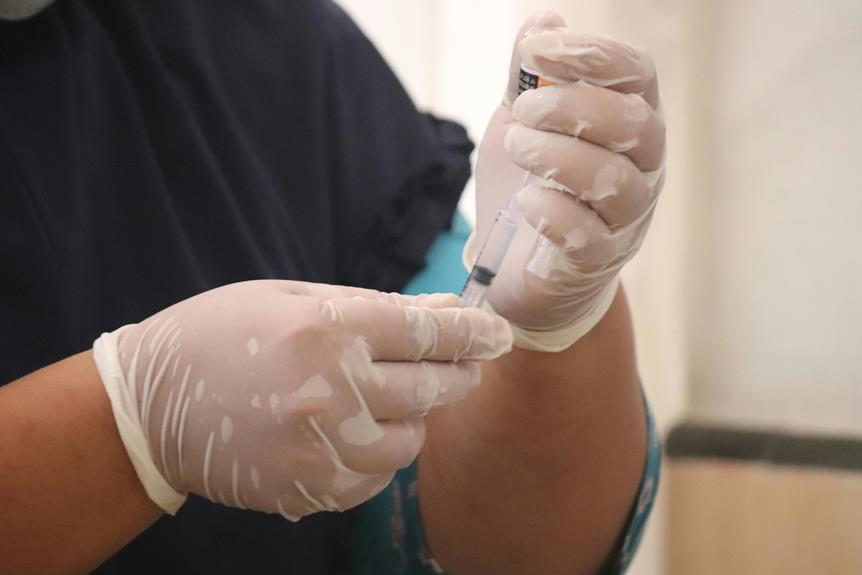
To prevent and treat common workout injuries, prioritize proper warm-up routines before physical activity to prepare your muscles and joints. Listen to your body and focus on using correct form during exercises to avoid strains and sprains. If you incorporate dynamic movements and ensure adequate hydration and nutrition, you can reduce the risk of injuries. Remember, recognizing warning signs early can be key to preventing workout injuries from escalating.
Common Workout Injuries Overview
Common workout injuries can range from minor sprains to more serious muscle strains, impacting your fitness progress and overall well-being. One common injury is the sprained ankle, often caused by sudden movements or improper landing techniques. This can hinder your ability to perform lower body exercises and affect your balance.
Another frequent injury is the shoulder impingement, which can occur from overuse or poor form during weightlifting. This may limit your upper body workouts and lead to discomfort in daily activities.
Additionally, muscle strains, like hamstring strains, are prevalent among individuals pushing themselves too hard without proper warm-ups. These strains can sideline you from intense workouts and require significant recovery time.
Understanding the types of workout injuries you may encounter is crucial in maintaining a safe and effective fitness routine. By recognizing the warning signs and symptoms early on, you can address these issues promptly and prevent them from escalating into more severe conditions. Remember, listening to your body and practicing proper form are key components in preventing common workout injuries.
Prevention Strategies
To prevent workout injuries, prioritize proper warm-up routines before engaging in any physical activity. Incorporating dynamic movements that mimic the exercises you'll be doing can help prepare your muscles and joints for the workout ahead. Additionally, ensuring your body is adequately hydrated and fueled with the right nutrients can enhance your performance and reduce the risk of injuries.
Innovative prevention strategies also include incorporating regular rest days into your workout routine to allow your body to recover and repair itself. Varying your workout activities can prevent overuse injuries by giving specific muscle groups time to rest while engaging others. Using proper form and technique during exercises is crucial to prevent strains and sprains. Consider working with a certified personal trainer to ensure you're using the correct form for each exercise.
Furthermore, investing in high-quality footwear that provides adequate support and cushioning for your specific activity can help prevent injuries related to poor footwear choices. Finally, listening to your body and not pushing through sharp pain can prevent minor issues from turning into more severe injuries.
Treatment Methods
Consider incorporating R.I.C.E. therapy as an initial step in treating workout injuries. Rest, Ice, Compression, and Elevation can help reduce pain and inflammation, promoting faster recovery. Additionally, utilizing foam rolling techniques can aid in releasing muscle tightness and improving blood flow to the injured area. This innovative approach can enhance healing and restore mobility.
Another cutting-edge treatment method is the use of contrast therapy, alternating between hot and cold treatments. Heat increases blood flow, while cold reduces inflammation, offering a dynamic approach to accelerate recovery. Moreover, incorporating light stretching and low-impact exercises can prevent muscle stiffness and promote flexibility without exacerbating the injury.
For more severe injuries, such as sprains or strains, seeking professional medical advice is crucial. Physical therapists can provide personalized treatment plans, including specific exercises and modalities to target the injured area effectively. By staying proactive and embracing these innovative treatment methods, you can expedite the healing process and get back to your workout routine stronger than ever.
Recovery and Rehabilitation
For effective recovery and rehabilitation from workout injuries, prioritize a structured and consistent approach to enhance your healing process. Embrace cutting-edge techniques like cryotherapy to reduce inflammation and speed up recovery.
Incorporate dynamic stretching and foam rolling into your routine to improve flexibility and promote blood flow to the affected muscles. Experiment with innovative tools such as percussion massagers to alleviate muscle tension and enhance tissue repair.
Stay proactive by consulting with a physical therapist to create a personalized recovery plan tailored to your specific injury and fitness level. Explore alternative therapies like acupuncture or yoga to complement traditional rehabilitation methods and accelerate your healing journey.
Conclusion
Remember, staying injury-free during your workouts is crucial for long-term success. By following proper prevention strategies such as warming up, using proper form, and listening to your body, you can decrease your risk of common workout injuries.
If you do happen to experience an injury, seeking treatment promptly and allowing time for recovery and rehabilitation will help you get back to your fitness routine faster. Stay proactive and take care of your body to stay strong and healthy.




